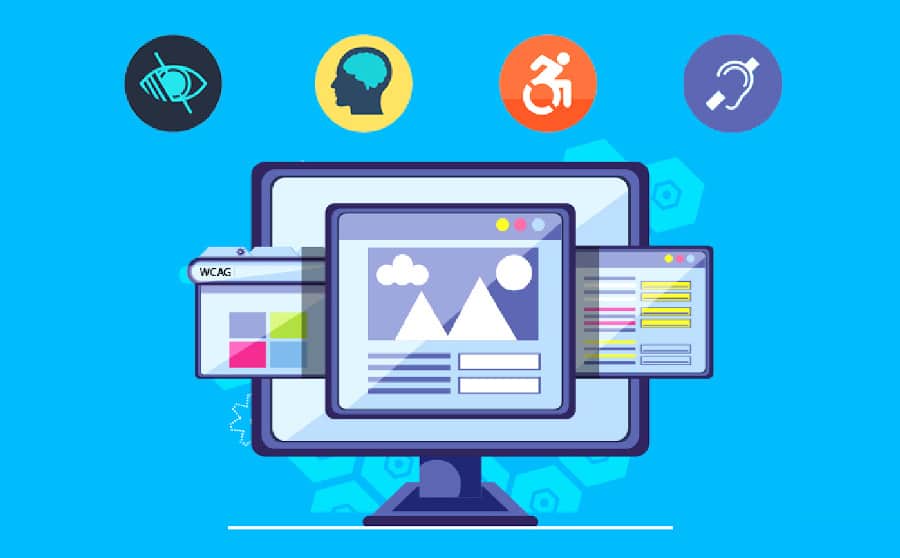Exploring the technological accessibility and inclusive design
Technological accessibility refers to the design and development of digital products and services in a way to ensures they can be used.

In today's digital age, technological accessibility plays an increasingly central role in our lives. From smartphones to smart homes, from online education to telemedicine, technology has become an integral part of how we communicate, work, learn, and live.
However, this digital revolution comes with its challenges, particularly in ensuring that technology is accessible to all, regardless of physical or cognitive abilities.
This is where the concepts of technological accessibility and inclusive design come into play, paving the way for a more equitable and empowering future for everyone.
Understanding Technological Accessibility
Technological accessibility refers to the principle that digital tools, platforms, and content should be designed and developed in such a way that they can be used and understood by people with a wide range of abilities and disabilities.
These disabilities may include visual, auditory, motor, or cognitive impairments. The goal of technological accessibility is to remove barriers and provide equal access and opportunity to all individuals, regardless of their abilities.
Importance of Technological Accessibility
- Equal Opportunity: Technological accessibility is fundamental for promoting equal opportunities. When technology is accessible, it ensures that people with disabilities can participate fully in various aspects of life, such as education, employment, and social interactions. This, in turn, contributes to a more inclusive society.
- Legal Compliance: Many countries have enacted laws and regulations that require organizations and developers to make their digital products and services accessible to people with disabilities. Failure to comply with these laws can result in legal consequences. Complying with accessibility standards not only helps organizations avoid legal issues but also demonstrates their commitment to inclusivity.
- Economic Benefits: Making technology accessible has economic advantages. It expands the potential customer base for businesses, as more people can access and use their products and services. Additionally, accessible technology can enhance employee productivity, opening doors to a more diverse workforce.
Understanding Inclusive Design
Inclusive design is a design approach that goes beyond mere accessibility compliance. It aims to create products and environments that are usable by as many people as possible from the outset. Inclusive design takes into account the diversity of human abilities, needs, and preferences, making it a proactive approach to building inclusive technology.
Importance of Inclusive Design
- User-Centered: Inclusive design puts the user at the center of the design process. It encourages designers and developers to consider the needs and experiences of a wide range of users, leading to more user-friendly and effective products.
- Future-Proofing: Inclusive design anticipates future needs. By designing with inclusivity in mind, products are more adaptable to the changing needs and abilities of users. This reduces the need for costly retrofits or redesigns down the road.
- Innovation and Creativity: Inclusive design fosters innovation and creativity. When designers are challenged to create solutions that work for everyone, they often come up with novel ideas that can benefit a broader audience.
Key Principles of Inclusive Design
- Diverse Representation: Ensure that the design team includes individuals with diverse backgrounds and abilities. Their perspectives can shed light on unique user needs and preferences.
- Flexibility: Create products and environments that can adapt to individual preferences and abilities. Customizable settings and options empower users to tailor their experiences.
- Clarity and Simplicity: Keep designs simple and intuitive. Clear user interfaces and straightforward interactions benefit everyone, not just those with disabilities.
- Multiple Modes of Engagement: Offer multiple ways for users to interact with technology. This might include touch, voice commands, keyboard shortcuts, and more.
- Continuous Feedback and Testing: Involve users with disabilities in the design and testing process. Their feedback is invaluable for identifying and addressing accessibility barriers.
Examples of Inclusive Design
- Voice Assistants: Voice-activated digital assistants like Siri and Alexa are excellent examples of inclusive design. They provide a convenient way for people with motor impairments or visual impairments to access information and control devices.
- Closed Captioning: The option to enable closed captioning in video content benefits both the deaf and hard of hearing community and those who prefer to watch videos without sound in certain situations.
- Text-to-Speech Technology: Text-to-speech (TTS) technology allows people with visual impairments to access written content online. It also has applications for people with dyslexia or those who prefer to listen rather than read.
The Intersection of Technological Accessibility and Inclusive Design
Technological accessibility and inclusive design are closely intertwined. Inclusive design is the proactive approach to creating accessible technology news, considering the diverse needs of users from the start. However, even with the best intentions, not all accessibility barriers can be predicted or eliminated through design alone. This is where technological accessibility comes into play.
Technological accessibility involves providing additional tools, features, or accommodations to address specific accessibility needs that may not have been fully anticipated in the initial design. It acts as a safety net to catch any potential gaps in inclusivity.
For example, while a well-designed website may be navigable for most users, some individuals with visual impairments may still encounter challenges. To address this, developers can incorporate screen reader compatibility, alternative text for images, and keyboard navigation features. These are specific accessibility measures that enhance the inclusivity of the design.
The synergy between these two concepts is critical in achieving a truly accessible and inclusive digital environment.
Challenges in Implementing Technological Accessibility and Inclusive Design
- Awareness and Education: Many designers, developers, and organizations lack awareness and knowledge about accessibility and inclusive design principles. Addressing this gap through education and training is essential.
- Cost and Resources: Some perceive accessibility measures as costly and resource-intensive. However, when integrated from the beginning, accessibility often becomes more cost-effective in the long run.
- Rapid Technological Advancements: The fast pace of technological innovation can sometimes outstrip efforts to make new technologies accessible. Continuous updates and adaptations are necessary to keep up with the changing landscape.
- Resistance to Change: Resistance to change can be a barrier to implementing inclusive design. Some may resist because they see it as an extra step, while others may fear it will compromise aesthetics or functionality.
The Way Forward
- Education and Training: A concerted effort is needed to raise awareness and educate designers, developers, and decision-makers about the importance of technological accessibility and inclusive design. This can be achieved through workshops, courses, and resources on accessibility best practices.
- Incorporate Accessibility Standards: Developers should incorporate recognized accessibility standards such as the Web Content Accessibility Guidelines (WCAG) into their design and development processes. These guidelines provide a clear framework for creating accessible digital content.
- User-Centered Design: Embrace a user-centered design approach that prioritizes the needs and preferences of all users. This can involve user testing with individuals with disabilities and actively seeking their input.
- Collaboration and Feedback: Collaboration among designers, developers, accessibility experts, and end-users is crucial. Regular feedback loops help identify and address accessibility issues effectively.
- Innovation: Embrace innovation as a driving force for inclusivity. Encourage designers and developers to think creatively about how to make tech tips more inclusive and accessible.
Technological accessibility and inclusive design are not mere buzzwords; they represent fundamental principles that shape the future of technology and society.
The digital world should be a place where everyone, regardless of their abilities, can participate, contribute, and benefit.
By prioritizing technological accessibility and embracing inclusive design, we can build a more equitable, user-friendly, and innovative digital landscape that empowers and includes everyone.
It's not just a matter of doing the right thing; it's about recognizing that inclusion is a source of strength and creativity that enriches us all. As we move forward in this digital age, let's ensure that no one is left behind.
What's Your Reaction?
















